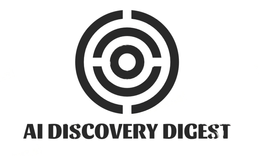Welcome to the future of farming! In a world where traditional agriculture methods are facing increasing challenges, vertical farming has emerged as a game-changer. And now, with the integration of Artificial Intelligence (AI), this innovative approach is poised to revolutionize efficiency in food production like never before.
Picture a towering skyscraper filled with rows upon rows of leafy greens and vibrant crops, all thriving without soil or sunlight. It may sound like something out of a science fiction movie, but vertical farming is very much real and rapidly gaining traction around the globe.
What is AI and How Does it Fit into Vertical Farming?
Artificial Intelligence (AI) is a branch of computer science that focuses on the development of intelligent machines capable of performing tasks that typically require human intelligence. It involves the creation of algorithms and systems that can process data, learn from it, and make decisions or take actions based on that learning.
When it comes to vertical farming, AI plays a crucial role in optimizing efficiency and productivity. By leveraging AI technologies such as machine learning and computer vision, vertical farms can monitor plant health, optimize resource allocation, and automate various processes.
With AI-powered monitoring systems, vertical farms can continuously collect data on environmental conditions like temperature, humidity, light levels, and nutrient content. This real-time data allows farmers to make informed decisions about adjusting growing parameters to maximize crop yield.
AI algorithms can analyze vast amounts of historical data to identify patterns and correlations between different variables. This enables vertical farms to develop predictive models for crop growth and disease prevention. By detecting early signs of problems such as pest infestations or nutrient deficiencies through image recognition technology, AI helps farmers intervene promptly before the issue escalates.
Another way AI fits into vertical farming is through automation. Robotics equipped with AI capabilities can handle labor-intensive tasks such as planting seeds or harvesting crops with precision and speed. These autonomous systems reduce reliance on manual labor while ensuring consistent quality across production cycles.
By harnessing the power of artificial intelligence in areas like monitoring plant health, optimizing resource allocation using predictive analytics models, and automating labor-intensive processes through robotics,AI revolutionizes how we approach vertical farming.

Benefits of Implementing AI in Vertical Farming
AI, or Artificial Intelligence, has emerged as a game-changer in numerous industries, and vertical farming is no exception. The integration of AI technology into vertical farming systems brings forth a multitude of benefits that can significantly enhance efficiency and productivity.
One major advantage of implementing AI in vertical farming is its ability to optimize resource management. By analyzing various factors such as temperature, humidity, and nutrient levels, AI algorithms can accurately determine the precise amount of resources needed for optimal plant growth. This eliminates wastage and ensures that crops receive exactly what they require to thrive.
AI-powered sensors can continuously monitor plants’ health conditions by detecting early signs of diseases or pests. This enables farmers to take immediate action before any extensive damage occurs. With real-time data analysis provided by AI systems, farmers have access to valuable insights on crop performance and environmental conditions – allowing them to make more informed decisions regarding cultivation strategies.
Another benefit lies in the automation capabilities offered by AI technology. Tasks such as seeding, watering, and harvesting can be efficiently managed through autonomous robotic systems equipped with advanced computer vision algorithms. These robots work tirelessly round-the-clock without fatigue or human error – resulting in improved precision and consistency throughout the entire cultivation process.
The implementation of AI enhances predictive analytics in vertical farming operations. By analyzing historical data alongside real-time inputs from sensors and weather forecasts, machine learning algorithms can generate accurate predictions about future yields or potential risks like extreme weather events or disease outbreaks. This empowers farmers with valuable information for proactive planning and risk mitigation strategies.
Integrating AI also promotes sustainability within vertical farms. By optimizing resource usage through precise monitoring and control mechanisms enabled by AI systems; water consumption decreases significantly while minimizing energy usage becomes feasible due to efficient climate control based on intelligent decision-making processes.
Case Studies on Successful Integration of AI in Vertical Farms
- Green Sense Farms:
Green Sense Farms, a vertical farm based in Indiana, has successfully integrated AI technology into their operations. By utilizing sensors and cameras throughout their facility, they are able to collect real-time data on temperature, humidity, light levels, and plant growth. This data is then analyzed by AI algorithms that optimize the growing conditions for each crop. As a result, Green Sense Farms has increased their yield by 20% while reducing water consumption by 80%. The use of AI has also enabled them to automate tasks such as irrigation and lighting control, resulting in significant cost savings. - Plenty:
Plenty is another vertical farming company that has harnessed the power of AI to maximize efficiency. They have developed an AI system called “PlantOS” which monitors plant health and adjusts environmental factors accordingly. Through machine learning algorithms, PlantOS can anticipate changes in crop behavior and make adjustments proactively. This has led to improved crop quality and reduced waste. Additionally, Plenty’s use of robotics powered by AI allows for more precise planting and harvesting techniques. - AeroFarms:
AeroFarms is renowned for its innovative approach to vertical farming with the integration of artificial intelligence technologies playing a crucial role in their success story. Their proprietary software platform utilizes computer vision and machine learning algorithms to track plant growth patterns at every stage from seedling to harvest-ready plants. By collecting vast amounts of data on factors like nutrient levels and lighting conditions, AeroFarms can fine-tune their cultivation methods for optimal results. - Smart Acres:
Smart Acres is a vertical farming startup that leverages advanced AI systems coupled with IoT (Internet of Things) devices for efficient crop management. Their state-of-the-art greenhouse incorporates sensors that monitor various environmental parameters including temperature,humidity,and CO2 levels.
The Promising Future of AI in Revolutionizing Vertical Farming Efficiency
The promising future of AI in revolutionizing vertical farming efficiency is within our reach. As we have explored throughout this article, the integration of AI into vertical farming brings numerous benefits and opportunities for increased productivity, sustainability, and scalability.
By leveraging AI technology, vertical farms can optimize resource allocation, monitor plant health and growth patterns more effectively, automate tasks such as irrigation and lighting adjustments, and make data-driven decisions to maximize crop yields. This not only improves the overall efficiency of operations but also reduces costs and minimizes environmental impact.
With advancements in machine learning algorithms and sensor technologies, AI has the potential to continuously learn from data collected within vertical farms and adapt its strategies over time. This adaptive capability allows for continuous improvement in farming practices while reducing human labor requirements.
The successful case studies mentioned earlier demonstrate that AI is not just a theoretical concept but a practical solution that can significantly enhance the performance of vertical farms. By utilizing sophisticated algorithms to analyze vast amounts of data in real-time, these systems enable farmers to gain valuable insights into their crops’ needs promptly.
As technology continues to advance at an exponential rate, so does the potential for further innovation in the field of vertical farming. The integration of AI will undoubtedly play a crucial role in driving this innovation forward by improving crop quality control mechanisms even further or optimizing energy consumption through predictive analytics.
It is evident that embracing AI in vertical farming holds immense promise for transforming agriculture as we know it. With its ability to increase yield capacity while conserving resources and minimizing environmental impact – all under controlled conditions – there is no doubt that integrating AI into vertical farms will shape the future landscape of sustainable food production. So let us embrace this exciting journey towards more efficient and sustainable food systems empowered by artificial intelligence!


